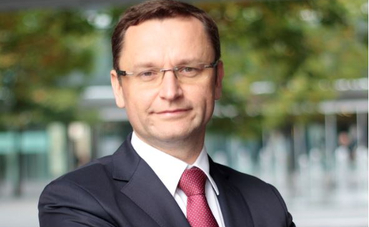The warehouse market is considered to be a big winner in the clash with the COVID-19 pandemic. The experts of Colliers International analysed the passing year and selected the most important events that took place in the warehouse sector and prepared forecasts for the market for 2021.
The most important events of 2020 in the warehouse market
1. Demand at a record high?
Tenant activity has remained high, and the projected total volume of transactions signed in 2020 is likely to be higher than last year. In the first three quarters of the year alone, 3.74 million sq m was leased, compared to 2.86 million sq m in the same period in 2019.
- The warehouse market has shown its resilience to the economic and market destabilisation caused by the COVID-19 pandemic. This is largely due to the e-commerce sector, whose development has significantly accelerated in recent months. Customers who have not yet used the Internet sales channel want to make up for the shortages as soon as possible. Similarly, companies which so far have relied mainly on traditional trade. Many large transactions will be closed this year, so the record in demand seems real - said Maciej Chmielewski, Senior Partner and Director of the Logistics and Industrial Department at Colliers International.
2. Supply going up
The total supply of modern warehouse space in Poland exceeded 20 million square metres. The largest projects completed in 2020 are A2 Warsaw Park in Grodzisk (103.7 thousand sq m), Hillwood Wrocław Wschód II (63.9 thousand sq m in two halls).
3. Giants in new locations
Amazon and Zalando have strengthened their positions in Poland. The eighth and largest Amazon logistics centre in our country was launched in Gliwice, while Zalando chose Głuchów near Łódź as its third logistics centre in Poland.
4. Change of owners
GLP has completed the acquisition of the Goodman Group's real estate portfolio in Poland, the Czech Republic, Slovakia and Hungary for EUR 1 billion. Goodman disappeared from the Polish warehouse market and the purchased properties changed their names and branding to the new owner's standards. GLP also started the construction of the first warehouse facility under its own name - GLP Warsaw II Logistics Centre - in Janki near Warsaw. Its area will be 32,000 sq m.
5. Shopping developers
- The pandemic also did not stop warehouse developers who are already thinking about further projects to meet current and future demand from tenants. In 2020 they were securing land for future investments - says Agnieszka Bogucka, analyst in the Research Department at Colliers International.
Its land bank was enlarged, among others, by Panattoni, which purchased a 14.8 ha plot of land for the development of Panattoni Park Stryków IV and the land in Czeladź for the construction of Panattoni Park Czeladź V. The purchases also included Segro, which purchased 7 ha for the extension of Segro Logistics Park Poznañ Komorniki, and 7R, which increased its land bank by a plot of land in Trzebowiska near Rzeszów (2.6 ha) in order to expand its offer in the Podkarpacie region.
2021 forecasts for the warehouse market
1. Looking for new investment opportunities
The warehouse market will continue to enjoy great interest on the part of investors, and sale & leaseback transactions, which provide an opportunity to maintain liquidity, will gain in popularity.
2. SBU is growing in strength
We will observe a significant increase in the popularity of small municipal warehouses (SBU), which are already in the portfolios of the largest developers operating on the market.
3. Shorter supply chains
As we predicted at the beginning of the pandemic, companies, seeing the need to reorganise the existing supply chain, will shorten it in order to minimise the potential risk of liquidity loss in the flow of goods.
- Companies with short, local supply chains have a limited exposure to the effects of border closures. The experience of the lockdown has therefore led many entrepreneurs to increase their stocks. No one wants to freeze capital or incur excessive storage costs, but the pandemic has shown how important a sufficiently large margin of security is. In the future, some companies will probably relocate part of their production from Asia to more easily accessible European countries, including Poland - says Maciej Chmielewski.
4. Time to stand out
The developers will try to distinguish themselves in the market by offering higher technical parameters of standard buildings, such as: increased fire resistance, net height of 12 m, additional lighting of the side area, more reinforced flooring or higher standard of finishing of the office part than before. These types of elements give tenants more freedom in terms of the quantity and type of goods stored.
5. E-commerce and beyond
We will continue to observe the rapid development of the e-commerce sector and the intensification of the activities of courier companies.
- The e-commerce sector in Poland still has a huge scope for development. So far, less than 10% of Polish people are shopping online. For comparison, in the UK about 18% of the population. Just reaching this level already offers very promising prospects - says Maciej Chmielewski.
